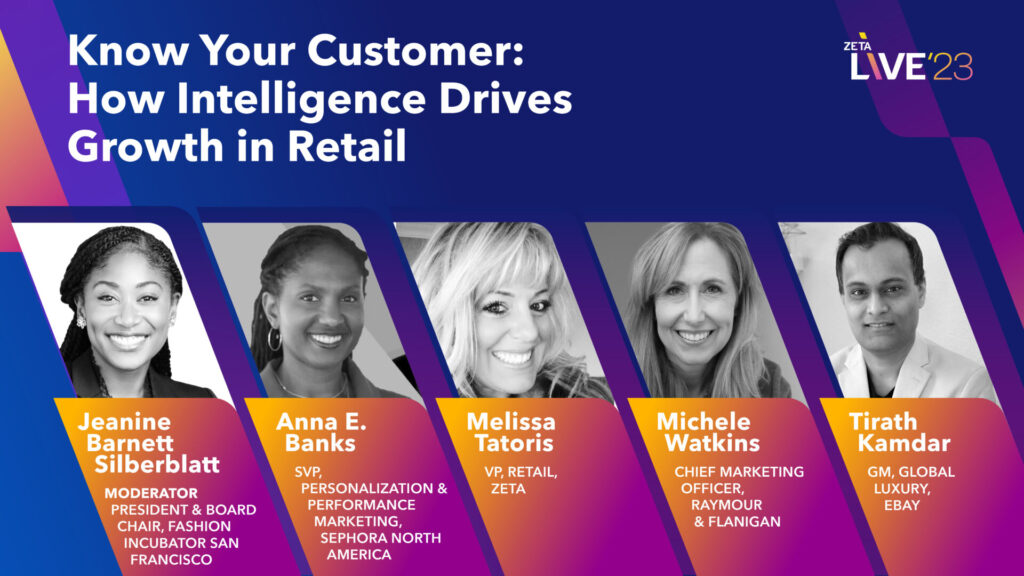
The Secrets of Customer Centricity – Part 2: Understanding Your Customer
If you missed Part 1 of our series: Building the Foundation, you can read it here.
By Kara Trivunovic, GVP, CX Studio. You’d be hard pressed to come across a blog, article, or ebook on customer centricity that doesn’t stress the importance of truly knowing your customers. I admit, I’ve been guilty of providing the same recommendation to brands I’ve worked with in recent years. But as we’ve started to assess the shifting landscape of martech, the role it plays in growing a business, and the evolving expectations of consumers, I had to wonder:
“Just how realistic is it to actually know your customer?”
I recently stumbled upon a paper, “Knowing Persons” by philosopher David Matheson of Carleton University in the journal Dialogue. The article examined the question many of us are fraught with—what does it mean to really know someone? Matheson distinguishes between impersonal knowledge—the information and facts we possess about another person—and personal knowledge, a deeper understanding that enables us to confidently assert that we truly know someone. In French, there are even separate words to delineate between the two connotations; savoir is to know facts, and connaître suggests greater intimacy or familiarity with a person or place.
As marketers, most of our engagement efforts are predicated on the data points we have access to, such as zero-party, first-party, or third-party data. These data points represent the information you’re given about someone, rather than an empirical knowledge of the person. While there will be occasions to interface one-on-one, most of our engagements will be centered around these data-driven insights.
That said, we’re going to start by shifting our narrative. As marketers, we need to understand our customers. And to truly understand them we need to accumulate data, interpret that data, and apply said data to drive specific outcomes.
Sourcing Customer Data
Once upon a time, gathering customer data was no walk in the park, , but today the sheer volume of data at our disposal is virtually limitless. With this in mind, it’s crucial to be mindful of your data sources and to clearly communicate to consumers how their data is being collected and used.
Not all data is created equal. The impact of data on your interactions with customers varies according to type, so bear that in mind when crafting your messaging.
Zero-Party Data
This is data that is provided to you directly by the customer; it is self-reported and obvious that it has been shared. The exchange of zero-party data needs to be equitable—the customer gets something of value in exchange for their data. This then incentivizes the customer to share accurate data, which is in turn valuable to the brand.
Transactional Data
Purchase and transactional data helps to predict future customer behavior. By analyzing replenishment cycles for previously purchased items, gauging price sensitivity, and identifying likely future purchases, you can gain valuable insights into how a customer thinks and acts. Moreover, this data enables businesses to tailor their strategies and anticipate customer needs more accurately.
Loyalty data
Leverage data from loyalty programs to get a deeper understanding of what truly motivates your customers. Pay attention to the details of how, when, and where they accumulate and redeem points. By analyzing these patterns, you can tailor your strategies to align with their preferences.
Customer Service Data
Customer service data can help you pulse-check your relationship with a customer, which is instrumental in determining the next steps in your communication strategy. By assessing the health of your relationship, you can position yourself as a trusted advisor, offering valuable content to help solve problems. Conversely, if a recent interaction has been negative, it might be beneficial to temporarily delay communication to allow for a cooling-off period.
Site Behavior Data
Engaging with customers involves more than just sending another abandoned cart message. Site behavior data shows us when a customer is actively researching products, categories, or other content, and presents an opportunity to lean into that behavior to assist in their research and decision-making processes. This data can also help tailor content recommendations in other marketing communications, positioning your brand as a valuable resource when they are ready to purchase. While traditional engagement strategies are undeniably important, it’s worthwhile to think outside the box and find innovative ways to leverage engagement data.
Third-Party Data
Last but not least, third-party data (like that provided by the Zeta Data Cloud) gives you previously untapped insight into your customers. This helps paint a fuller picture of the customer as well as informs everything from demographic and psychographic motivators to competitive share of wallet and intent signals.
Understanding the Data
Having the data isn’t enough—you need to understand it well enough to make informed decisions, and act on it accordingly. Not just at a cohort or segment level, but down to the individual. What have you learned about them? How does it affect your relationship with them, and how does it inform your future relationship? Data can inform several variables in the marketing relationship. Here are three important categories of understanding to consider for your programs:
Lifecycle Implications
The concept of the customer lifecycle can be interpreted and applied in several ways. It could refer to the customer’s journey with the brandor a specific product, as well as indicate their position in a purchase cycle. It could also represent an opportunity to reengage a customer. By leveraging data, you gain insights not only into your customers’ current phase but also a glimpse into where they’re going next. These insights help dictate the timing, content, and method of your communication and may also drive you to automate conversations when and where it is most relevant.
Behavioral Insights
Understanding what motivates your customers is key to deciphering their behaviors, whether it’s taking action, expressing loyalty, disengaging, or voicing complaints online. Leveraging behavioral insights is where you really begin to understand (not know but understand) your customers. This provides an opportunity to pinpoint the most desirable behaviors, identify potential look-alike customers, and drive a conversation that feels authentic.
Predicting Intent
This is where the fun comes in. While it’s commonly believed that past behavior can predict future actions—a notion that often holds true in the context of customer behavior—it’s important to go deeper. You need to anticipate what your customers want before they even do, positioning yourself as a pundit in the conversations leading up to an action.
It’s important to understand what they may want next, and why they want it. Maybe they’re at a seminal point in their life, like about to move or have a baby. This would explain piqued interest in home goods shopping or moving services, at which point you could meet them with engaging, relevant messaging. If you can understand their intention, you may just find an opportunity to connect in a meaningful way precisely when they need it most.
Great, Now What?
So what do you do with all this data, information, and understanding? While it might seem overwhelming, take a moment and ask yourself:
- What program, channel, or customer experience would benefit the most from a deeper customer understanding?
- How can I apply the data that we already have about our customers to better understand them, improve our relationship, and become more customer obsessed?
- How can I articulate my expectations for gaining a deeper understanding of the customer, and what metrics or evidence can I use to measure or showcase success?
- Do I have all the data I need to be able to understand the customer in the way I would like?
- How do I apply this understanding to my segmentation strategy, to personalize cross-channel experiences, and to determine who I do and do not communicate with and why?
- Do I have the right partner and technology to help me bring my vision to life?
It’s not enough to just understand your customers, you need to apply what you know in a way that is meaningful to both your customer and your business. Getting there is not necessarily easy to do on your own, but that’s where partners like Zeta come in. Stay tuned week for Part 3 of our Customer Centricity Series: Maintaining an Evolving Marketplace.
Want to see Zeta in action?




